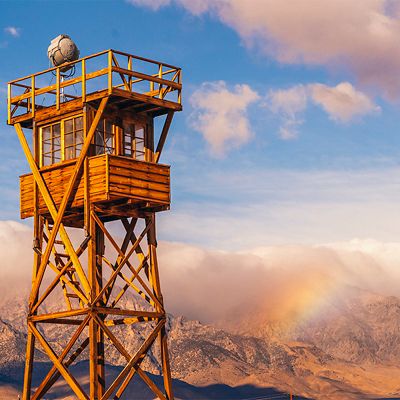The Adirondack Mountains are a backcountry oasis amid otherwise crowded eastern states. This circular dome rises to define northeastern New York, blending rocky summits, forested ridgelines and low hills with wooded flats dotted by chains of lakes and wandering rivers. Visions of fur trappers and traders, hardy backcountry guides, hunters, anglers, loggers and summer campers are all easy to come by walking through the ’Daks’ dense spruce forests past countless log shelters and signs of the area’s rich outdoor past.
Of those structures and shelters, one endures: the lean-to. Originally developed by guides bringing city-goers into the mountains originally inhabited by Iroquoian peoples, the three-sided, pitched-roof Adirondack lean-tos were crudely built as shelters for hunting and fishing parties. Eventually, they matured into the still-sound structures that have become a hallmark of the region. Today, several hundred lean-tos line trails throughout the 6 million-acre Adirondack Park, many in some of the sprawling protected area’s most spectacular campsites, ready to serve as a pre-installed basecamp for exploring one of the East’s most iconic mountain ranges.
Lean-to 101
Unlike a lot of other backcountry shelters and campsites, lean-tos in the Adirondacks are operated without reservations, caretakers, or any other infrastructure. And while there are typically enough to go around, there are some best practices for visiting them:
- Lean-tos typically sleep up to eight people and are shared. If there’s room for more, welcome anyone else looking for a place to sleep on the other side of the shelter.
- You can use rope or cord (no nails) to extend tarps off the front of the shelter, but you can’t close in the open side with one.
- Don’t set up your tent inside the lean-to. Many lean-tos are in areas that also feature designated tent campsites.
- Keep the shelters clean. You’ll often find a broom stashed somewhere around the shelter to brush our debris. And as always, pack out what you pack in.
If you’re visiting a lean-to for the first time, take a look around for a logbook—often on a small shelf near the shelter’s eve. Sign your name and mention your trip, then take a look back at what other visitors have been up to.










